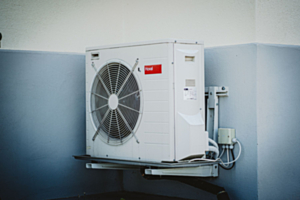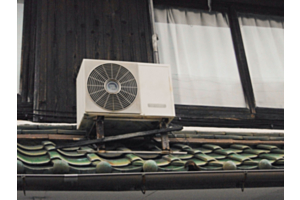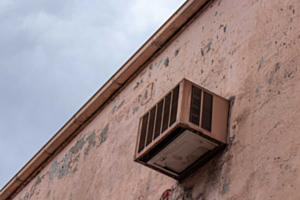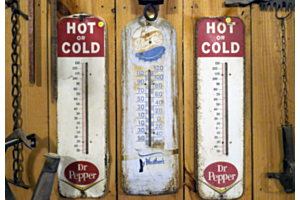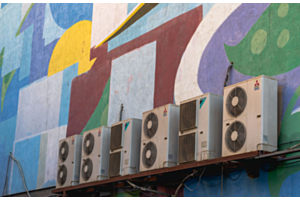ductless mini split systems
-
July 20, 2022
Your old air conditioner is finally on its way out. You’ve known this moment was going to come for a while now, but it doesn’t mean you have to be happy about it.
You’ve done some cursory research into a new cooling system, and a ductless mini split seems like it could offer more of what you’re looking for. You could have more cooling efficiency, plus no more ducts. That's always nice!
However, before you make up your mind, you need to know how much a ductless mini split air conditioner costs to get installed.
According to home remodel planning website Modernize, the cost of installing a ductless mini split system is between $1,500 and $8,500. The average price is $5,000, which is right in the sweet spot.
Why such a huge price discrepancy, you ask? Well, installation costs are dictated by factors such as how many ductless air conditioners you need.
-
July 06, 2022
Although your mini split technician will visit your home to clean the mini split components you can’t (and shouldn’t) reach, you can take care of some basic maintenance jobs yourself in the meantime.
One such job that you can safely do is clean your mini split coils. This quick guide will tell you everything you need to know.
First, before you touch anything, you must power down your ductless mini split system and unplug it. Give the parts adequate time to come to room temperature before you begin cleaning.
Both the indoor air-handling unit and the outdoor compressor have coils you can clean. We’ll start by telling you how to clean the air-handling unit’s coils.
To do that, you’ll have to take the cabinet off. With that out of the way, it’s finally time to start cleaning.
We recommend using a soft, clean microfiber cloth. You’ll also need a coil cleaner product of choice.
Following the product instructions, apply some of the coil cleaner onto
-
June 29, 2022
One of the things you most liked about your traditional HVAC systems was how hidden out of sight they were.
Your furnace was down in the basement where you never saw it except a few times a week when doing laundry. Your air conditioner’s main unit was out in your backyard tucked up against the house.
Sure, you could see it, but it wasn’t a huge eyesore.
You hate how inefficient your traditional HVAC units have become though. You’ve since sought a replacement.
You really like the idea of a ductless mini split system, but one area that’s giving you pause is the sight of the indoor air-handling units. You don’t want them standing out like a sore thumb in rooms that you painstakingly decorated.
Well, the good news is that you can hide the air-handling units if that’s what you want. By having a team of mini split technicians install the air-handling unit in the
-
June 22, 2022
You’ve long had an interest in a ductless mini split system, but you’ve never been sure where you’d put such a system. Perhaps your home is narrow or uniquely designed. You’d like a mini split in the basement, but you’re just not sure how feasible that is.
You can indeed put a ductless mini split in the basement, which we’re sure is music to your ears.
Allow us to be clear when we talk about what a ductless mini split system is.
A ductless mini split system is comprised of three parts. There’s the compressor, the indoor air-handling unit(s), and the refrigerant line that connects them. The refrigerant can change the air temperature that then comes out of the air-handling unit feeling temperate and comfortable.
The compressor, which is also known as the condenser,
-
June 15, 2022
Although ductless mini splits are different from ducted HVAC systems in almost every way, they do share one thing in common. They can both develop mold.
When we say develop mold, by the way, we don’t mean a thin layer of fungi on the exterior of the outdoor compressor. Oh no. It’s more like chunks of mold, and huge chunks at that.
It’s nothing you want to see, let alone breathe in, and the last thing you want is this mold anywhere near your home.
How do you get rid of unwanted mold and keep it out so you don’t have to worry about the quality of the air your family breathes in each day?
It’s easier than you think! Here’s what we recommend.
Keep Your Mini Split Maintained
-
June 08, 2022
Living in a large house undoubtedly has its advantages, such as plenty of space and luxurious amenities. When it comes to heating and cooling your home though, you have some rather unique challenges.
You’ve decided you want to upgrade to a ductless mini split system, as you’ve heard they’re more cost-effective and energy-efficient. You have no idea whether a mini split can cool your home given its size.
To answer that question, we highly suggest you use our hvac load calculator tool! Our tool correlates the square footage of your home to the amount of cooling power needed from a mini split in British thermal units or BTUs.
The tool correlates to the size of the zones that a ductless mini split will provide cooling for. A zone is an area in which a technician will install an indoor air-handling unit.
The air-handling unit provides cool air. It can also release warm air too if you live in a chilly region,
-
June 01, 2022
Humidity is all around us.
Most people assume that humidity is the oppressive heat you feel in the summertime. It’s mostly the high temperatures that make it hard to breathe, but humidity does play its role.
Humidity is technically a measure of how much moisture is in the air. Most homes and offices contain about 30 to 50 percent relative humidity, which isn’t enough to feel any noticeable difference most of the time.
If your humidity levels are higher than average because you live in a wet, swampy climate, you might have become interested in ductless mini split systems because you heard they could double as a dehumidifier.
Is that the case?
It is, but with some limits.
The average amount of moisture that people produce on an average day is roughly 25 pints. Ductless mini split systems can remove four of those pints of humidity each hour so your home feels drier and more comfortable.
That’s no small feat at all. However, if you wanted
-
May 25, 2022
First, one neighbor told you about their positive experience with a ductless mini split, then another. You’re curious and even a little intrigued, but you don’t know much of anything about ductless mini splits.
You’d like to change that. What should you know about this alternative heating and cooling method? Here are some facts to get you started.
Ductless Mini Splits Ditch the Ductwork
The name ductless is in there for a reason. Mini splits forego the ducts, which means saying goodbye to all the problems associated with ducts, especially air leaks.
According to Energy Star, upwards of 30 percent of the air that travels through a ducted system disappears through ducts that aren’t properly connected or have holes or gaps.
It’s no wonder a ducted system is so wildly inefficient!
Ductless Mini Splits Are Way Better for the Environment
-
May 18, 2022
Ductless mini splits can make a big difference in how comfortable your home feels (not to mention how much money you’ll spend on your utility bills), but they only work their best when they’re properly maintained.
If you’re a first-time mini split owner who’s still new to the system, this article will benefit you.
Here is all the maintenance a mini split requires.
Dust Off the Condenser
The compressor or condenser is the outdoor component of your ductless mini split system. Although it is protected from ground changes due to the concrete slab underneath, and it should be safeguarded overhead with an awning, the compressor can still get dirty.
Every month or so, go outside and remove sticks,
-
May 11, 2022
Your split system has been a godsend. You haven’t had to use a furnace and an air conditioner in so long because the split system provides both heating and cooling, As such, you’ve saved so much money on your utility bills in the past couple of months.
Unfortunately, though, your split system is barely producing hot air anymore. You’ve tinkered with the included thermostat and even still, the air that comes out is hardly warm. It’s certainly not hot.
You’re not sure what’s going on and whether you need a new split system. Why won’t your split system heat up?
First of all, you likely do not need a new split system, especially if you just got yours installed. A split system that won’t produce hot air is a relatively common problem with a simple fix.
The coils of


